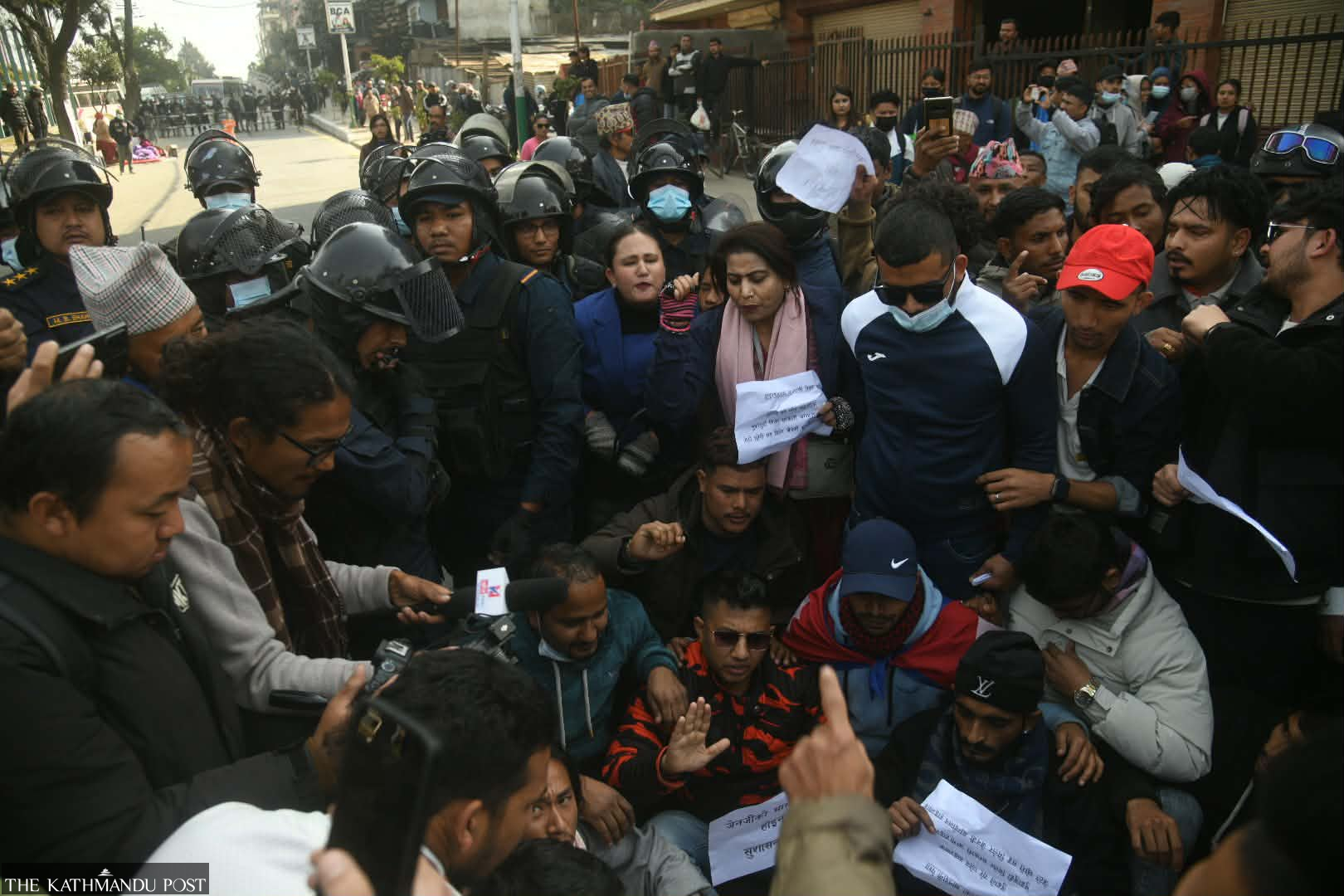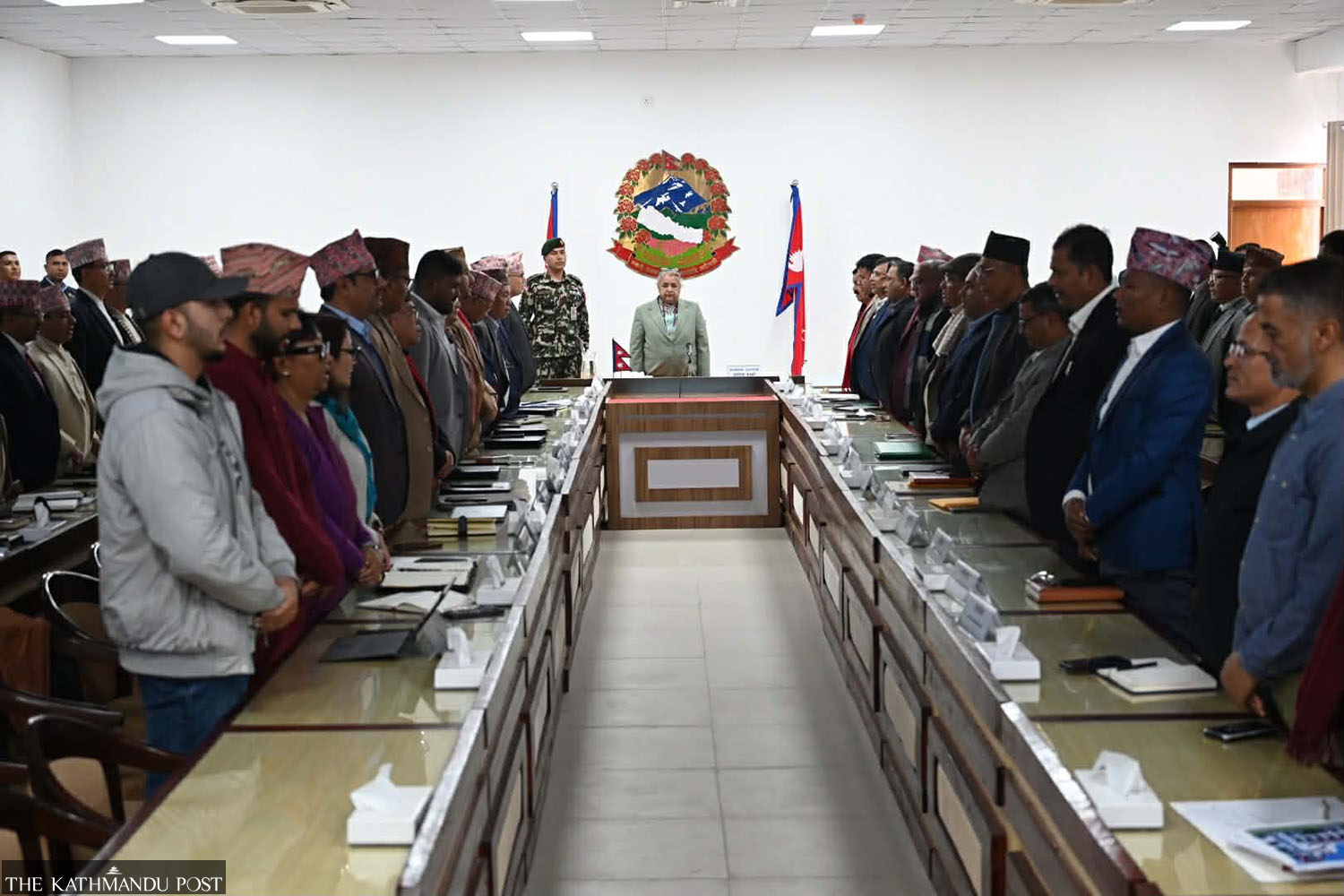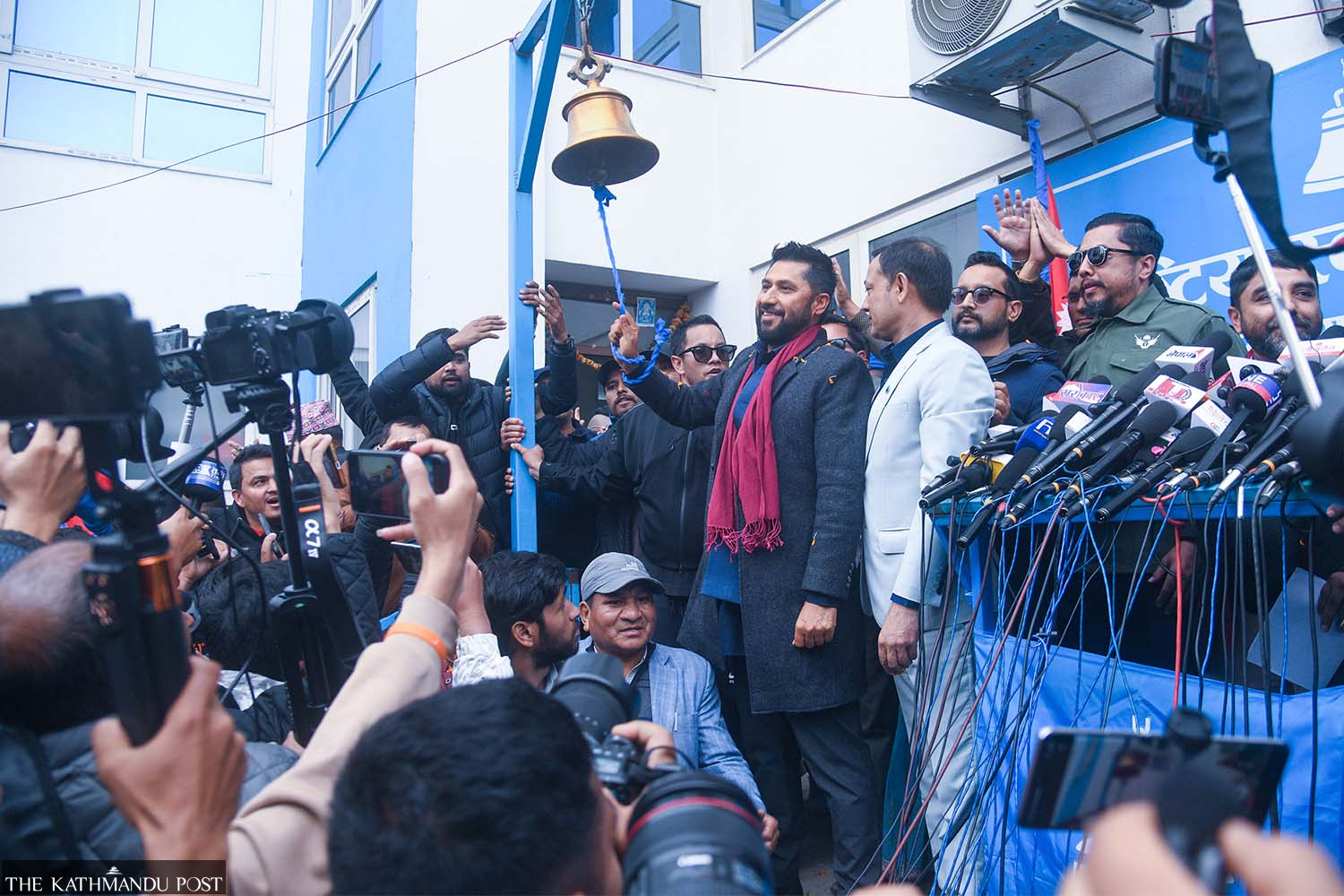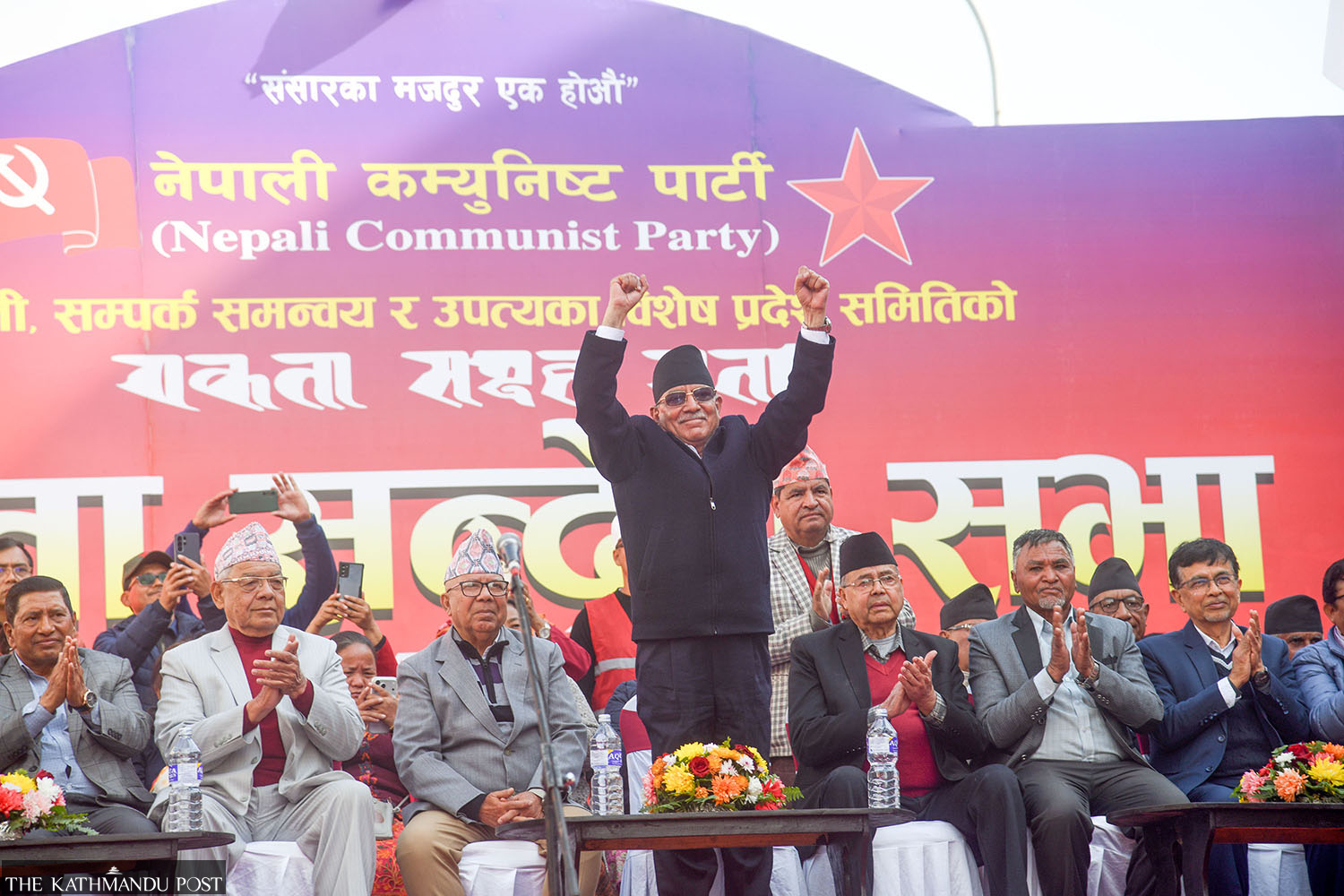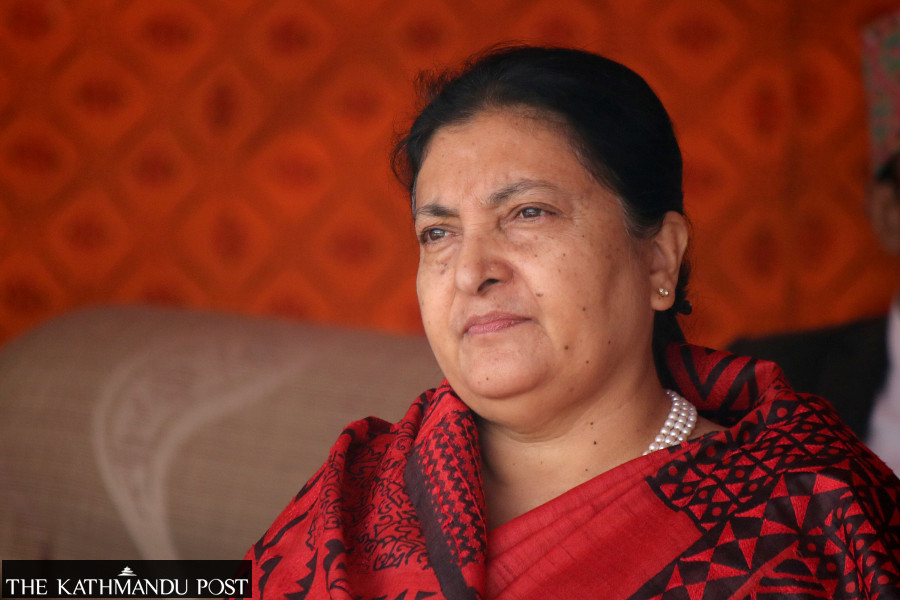Politics
The chairman has an identity crisis
Pushpa Kamal Dahal is torn between his two selves: an insidious, crafty Prachanda who will go on the offensive to get what he wants, and a gentle, pragmatic Pushpa Kamal who can placate opposing factions and win over the media.
Anil Giri
Pushpa Kamal Dahal is a man divided.
At the final session of Kantipur Conclave last week, Pushpa Kamal, dressed in a dark suit with a matching topi and a silk tie, appeared relaxed and confident, speaking at length about himself, his journey and his ambitions.
“I have no desire to become prime minister any time soon,” he said.
But Pushpa Kamal had only just put Prachanda to rest. In vying for power with co-chair and prime minister KP Sharma Oli, Prachanda had pulled off a Machiavellian feat, turning Oli’s former UML allies against him. Prachanda’s man, Agni Sapkota, became Speaker of the House of Representatives over Oli’s choice of Subas Nembang.
“He seized the offensive,” Lekhnath Poudel, a central committee member of the party told the Post on Sunday, describing Dahal’s tactics.
When he is Pushpa Kamal, meaning lotus flower, he is charming, effusive and pragmatic, like he was last week at the conclave. When he is Prachanda, or the fierce one, he is seen as devious, insidious and crafty, like he was over the Speaker affair.
In the 14 years since the Maoist insurgency that he led as supreme commander came to an end, Pushpa Kamal has increasingly attempted to shed Prachanda. But he remains torn between becoming the consummate politician and remaining the quintessential commander.
No one knows more about this identity crisis than Dahal himself, who has admitted to being conflicted about who he really is.
“I feel different each time I am called by a different name,” he said in July last year at a cultural programme. “When people call me Prachanda, I feel like I represent the entire country. I take pride in fighting for identity, equality, the rights of indigenous and underprivileged people and backward communities, the people and social justice. But when I am called Pushpa Kamal Dahal, I feel like I represent just one community—something which is limited and confined to a small conservative circle.”
But Dahal is a man of contradiction; both Prachanda and Pushpa Kamal reside within him. He appears to switch at will, like Jekyll and Hyde, transforming into Prachanda when he needs to make a fiery speech or play political chess and back into Pushpa Kamal when he needs to placate opposing factions and win over the media.
And this is not a recent phenomenon. Ever since he emerged from the underground in 2006, Dahal has always been torn.
From Prachanda to Pushpa Kamal

When the Communist Party of Nepal-Maoist launched ‘people’s war’ in 1996, not many knew who Pushpa Kamal Dahal was. Dahal then was known only by his nom-de-guerre, Prachanda, aptly translated by the media as ‘The Fierce One’, even though there are many translations for the word.
In 2000, four years after the conflict officially began, Prachanda was known only by a drawing of a stern-faced mustachioed man, clad in revolutionary fatigues, circulated in various propaganda pamphlets. Many doubted his very existence. In 2001, the Nepal Army produced a grainy photo of a bearded man holding a walking stick, his eyes seemingly closed in concentration.
Still, no one knew who Dahal was.
It was only in 2006, after the Maoists had temporarily agreed to suspend their insurgency and join with the mainstream political parties that the Nepali people got their first real glimpse of the man known only as Prachanda.
Clad in an ash grey safari suit, with his salt-and-pepper hair gelled and swept back and a well-cared Stalin moustache, Prachanda appeared.
In the days to follow, Prachanda would sweep the political establishment, in both Nepal and India, off their feet. He was charismatic and had the air of a revolutionary. Diplomats flocked to meet the man who had waged a 10-year insurgency against the state’s much superior and well-equipped security forces, including the Nepal Army, with a bunch of untrained peasants and ancient weapons seized from feudal landowners. But the insurgency came at a heavy cost--17,000 killed by both the Maoists and the state security forces, thousands disappeared and thousands more displaced.
“When I met him for the first time, he did not look like a deadly Maoist chairman,” Anirban Roy, then Kathmandu correspondent for the Hindustan Times, and the author of Prachanda’s biography, told the Post. “He looked like a shy college teacher, soft spoken and well read. But then I saw him at a party meeting and he was a different man. Amidst his comrades, he is Prachanda.”

On November 22, 2006, the Nepal government and the Maoists signed the historic Comprehensive Peace Agreement, officially ending the ‘people's war’. But Dahal remained Prachanda, as was evident in the fiery speeches he gave often, promising to end class and caste discrmination, ensure social justice and transform Nepal into Switzerland.
But it wasn’t until the 2008 Constituent Assembly elections that Prachanda’s transformation into Pushpa Kamal Dahal really began.
“In speech after speech, he glossed over his party's brutal past,” wrote journalist Kunda Dixit in a Nepali Times profile. “He tried to force people to look to the future and championed the cause of the poor and oppressed.”
The Maoists swept the 2008 elections, and it was Pushpa Kamal Dahal—not Prachanda—who became prime minister.
Days after assuming office as a communist prime minister, only the second after Manmohan Adhikari, Dahal headed to China, breaking with convention to visit India first. Dahal and his party members called this “krambhangata”--breaking tradition.
“But was he able to keep his word?” Mohan Baidya, Dahal’s one-time mentor and one of the architects of the ‘people’s war’, who has since broken with the former Maoist chairman to form his own communist party, asked in a recent interview with the Post. “Dahal was an opportunist and he remains an opportunist.”
Dahal’s decision to make China his first port of call did not go down well with India, where he spent most of his time during the war in different shelters. Delhi communicated its displeasure and Dahal was forced to clarify that his visit to Beijing was to attend an event, not in his official capacity as head of government. His first official foreign visit was ultimately New Delhi.
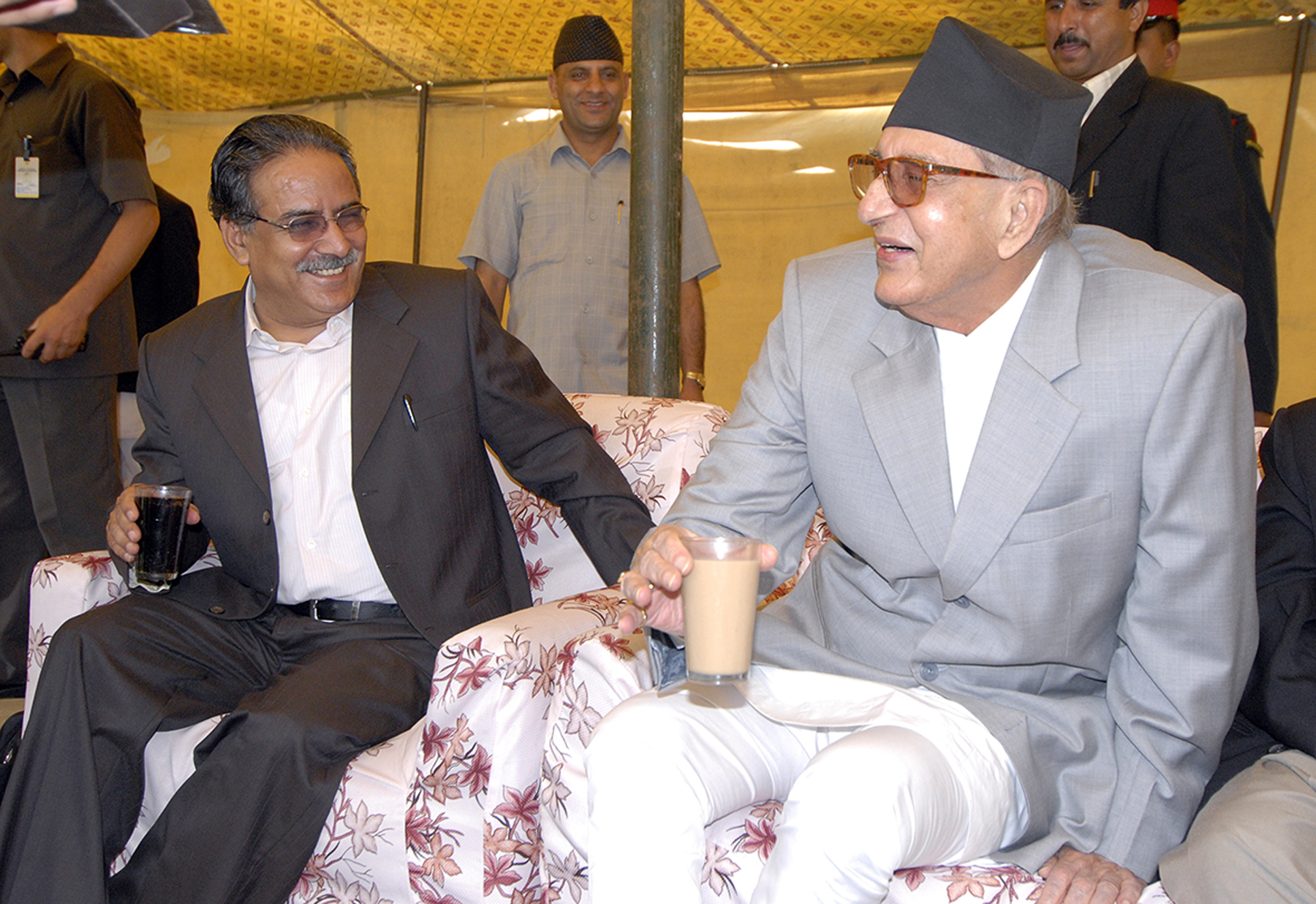
Baidya, who broke with Dahal in 2012, has harsh words for Dahal.
“It’s power he has been running after all this time. He changes his tone and does not hesitate to renounce ideology,” he said. “He utilises every opportunity to be in a position of power.”
Dahal’s premiership did not last long. His transformation into the canny Pushpa Kamal had not taken hold yet and he was unwilling to allow an affront to the power he had exercised for so long as supreme commander. Nepal Army Chief Rookmangud Katawal had long opposed the integration of Maoist soldiers into the national defence force. While army integration ultimately went through, Katawal continued to be a thorn in Dahal’s ambition.
On May 3, 2009, Dahal sacked Katawal, alleging that the latter had refused to accept civilian supremacy over the Nepal Army. Then president Ram Baran Yadav intervened, overturning Dahal’s decision and precipitating a political crisis. A day later, barely nine months into his premiership, Dahal stepped down “for the protection of democracy and peace”, he said.
Believing that his fall was engineered by an irate India, Dahal began making public statements and rabble-rousing speeches. In December that year, at one of the biggest protests by the Maoists arguing for “civilian supremacy”, Dahal said that he would hold direct talks with the ‘master’--New Delhi. Dahal was back in top form as Prachanda, reigniting the rhetoric of “expansionist India”, Nepal’s principal enemy, according to many communist parties.
Just a year into the Constituent Assembly--one of the Maoists’ major demands--Dahal was in a dilemma. His stay in power had been too brief, and he had no option than to bide his time and repair relations with New Delhi.

The first Constituent Assembly ultimately failed to produce a constitution due to squabbling among the parties. But the one-upmanship of traditional parties like the Nepali Congress and CPN-UML held the constitution-making process hostage and it was the Maoists, the biggest party in the Assembly, that was ultimately maligned.
In 2013’s second Constituent Assembly elections, the Maoists were roundly defeated, relegated to third place. But while the party suffered, bickering among the top leadership of the major political parties only kept Dahal’s relevance alive as an influential albeit inconstant actor.
It took a natural disaster for the Constituent Assembly to finally come together and agree on a constitution. In September 2015, in the aftermath of deadly earthquakes that killed nearly 9,000 people, a new constitution was promulgated. And nearly a year later, in August 2016, Dahal returned to power as prime minister.
Dahal had become part of the same parliamentary system that he once abhorred, and in the process, he had alienated his most trusted allies--Baidya, Baburam Bhattarai and Netra Bikram Chand, a primary commander of the Maoist militia during the conflict years.
“Dahal not only surrendered to the traditional parties but also deviated from his ideology,” said Baidya.
In this time, Dahal acquired a reputation for duplicity and the adjective ‘machiavellian’ began to appear more frequently in the English-language press to describe him. His frequent change of stance on issues and his switching of alliances began to irk the parties. But Dahal had become firmly ensconced within the political machine, becoming a key player. And after all, duplicity is part and parcel of the art of war, something he had learned intimately during the 10-year insurgency.
Dahal, the devious and deceptive
-and-Baburam-Bhattarai-(Lal-Dhwoj)-during-a-opening-peformance-of-an-international-song-before-inaugurating-the-first-PLA-meeting-in-Rolpa-in-2002.jpg)
It wasn’t long after his emergence into the mainstream that Dahal’s capacity to switch allegiances began to dominate analyses of his personality and political actions. But political party insiders say that this has always remained a central part of Dahal’s modus operandi, from the very beginning of the Maoists’ rapprochement with the mainstream political parties during the second People’s Movement.
After king Gyanendra stepped down, Dahal had publicly celebrated then Nepali Congress President Girija Prasad Koirala for his role in bringing the Maoists overground. He even supported Koirala’s bid to become the country’s first president.
“At a meeting between the Nepali Congress and Maoists, Dahal assured us that his party would support Koirala as first president of Nepal,” Amresh Kumar Singh, a Nepali Congress lawmaker who was part of the meeting, told the Post. “Later, Dahal backtracked.”
But later, Dahal changed positions and publicly said that he did not favour the Nepali Congress’s proposal for the post of president because of Koirala's advanced age and deteriorating health.
Dahal himself had been making a case, at least to his followers, to become the first president of federal Nepal. But he never had enough support. He even earned some ridicule when he became the prime minister after the 2008 elections, as posters were plastered across the city portraying him as the new president. Many took a dig, calling him a “bhitte rastrapati”--a president on the walls.
This was the first instance where Nepali Congress leaders began to wonder just how true to his word Dahal would be. But events would quickly lead the Congress, and the other parties, to learn just how much they could trust Dahal.
That year, the country was in the midst of integrating the Maoists’ People’s Liberation Army with the Nepal Army, one of the conditions stipulated in the Comprehensive Peace Agreement. The process was being overseen by the United Nations Mission in Nepal, which verified the number of combatants and facilitated whether the combatants wanted to be integrated into the Army or retire voluntarily with a cash package.
Dahal had publicly told UNMIN, the parties and the people that the People’s Liberation Army had 35,000 soldiers. But in 2009, a recording of a speech he had made at the Shaktikhor cantonment the previous year emerged. In the recording, Dahal tells the rebel fighters that the actual number of combatants was closer to seven or eight thousand.
“But if we had reported that, we would have 4,000 left after verification,” he says in the video. “Instead, we claimed we had around 35,000 and now we’ve come down to around 20,000. We cannot tell others but you and I know the truth.”
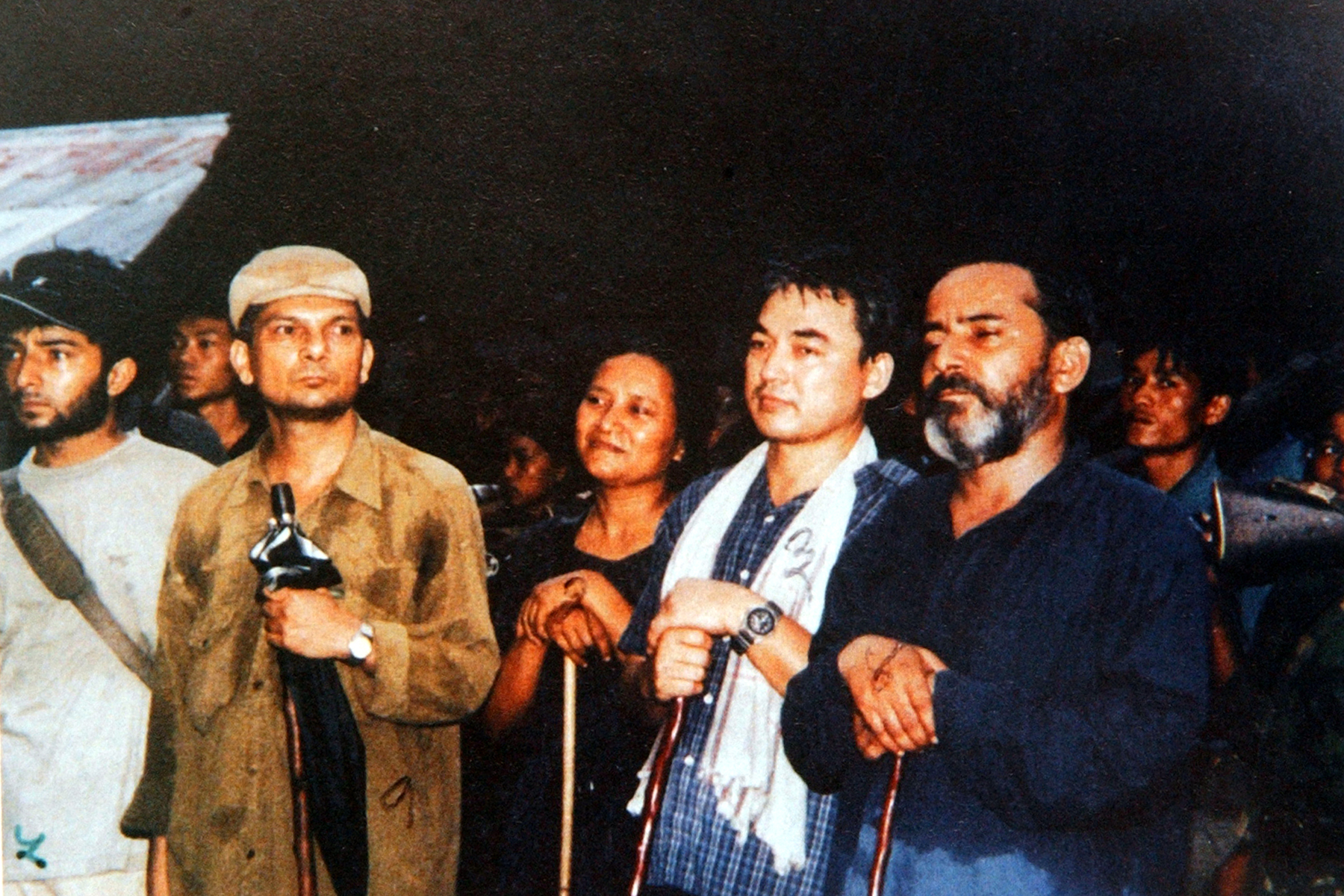
Dahal called this deliberate misleading a part of “strategy and tactics”.
Later, Dahal bizarrely went on to claim that weapons used during the decade-long insurgency had either been washed away by rivers or reduced to ashes. His statement was widely criticised, even by his own party leaders. Dahal then blamed the media for misquoting him.
Dahal has also vacillated on one issue that has long been the pet peeve of all communists at one time or the other--India.
As a rebel leader and immediately after, Dahal often criticised India as an imperialist force, but when he visited New Delhi, he told leaders that India was a second home for him, as he spent eight out of 10 years hiding out in their country.
But when his government was toppled in 2009--which he believed to be largely at India’s behest--Dahal openly challenged the New Delhi establishment and announced that “he would talk to the master, not the servant.”
Four years later, after the results of the second Constituent Assembly, where his party stood third, he once again blamed India and other foreign forces for the election debacle.
At all these junctions, Dahal eventually stepped back and took back his criticism, cozying up to India when it suited him. He’s done the same thing with political parties in Nepal, alternating between allying with the Congress and the UML.
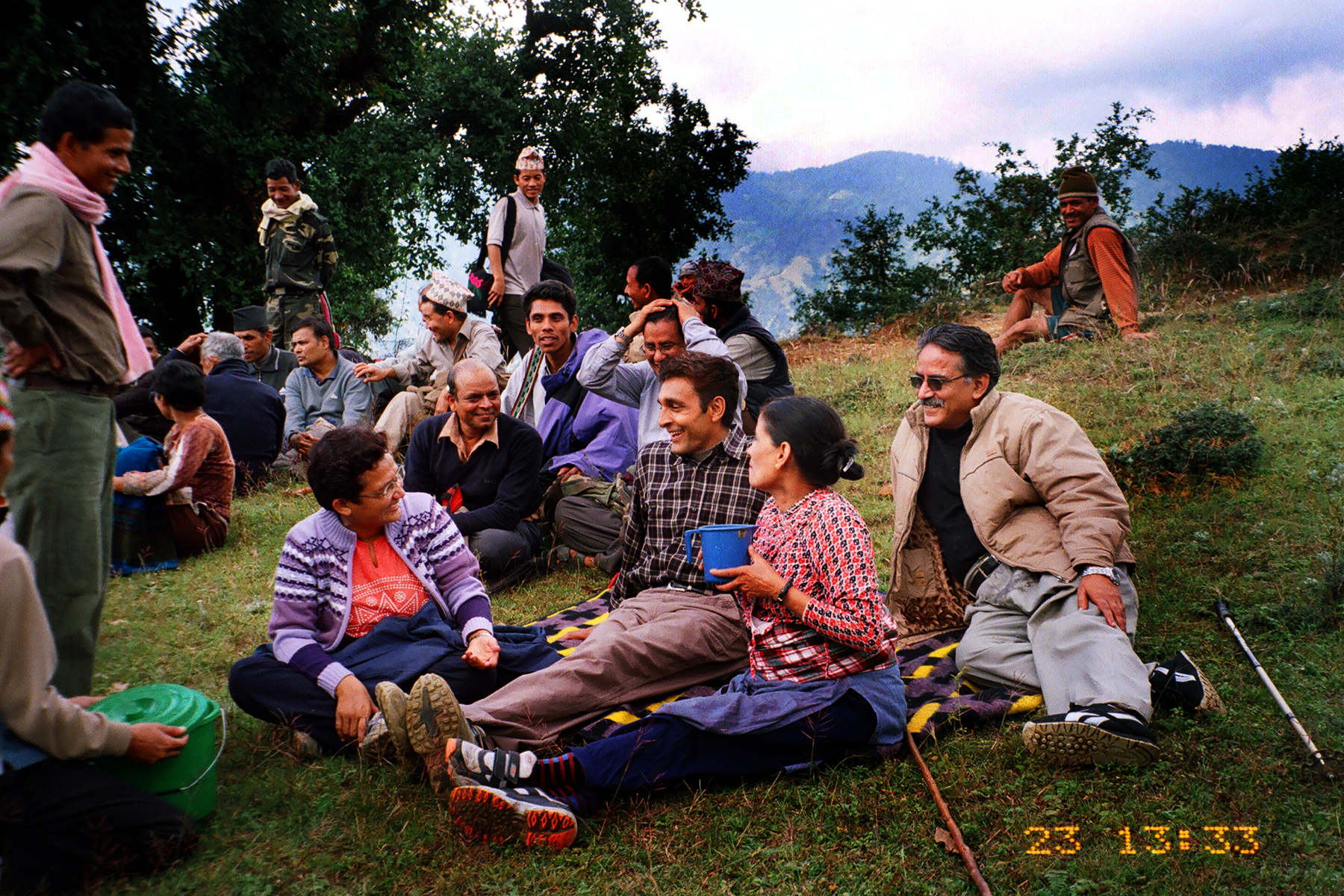
Dahal, after the promulgation of the new constitution in 2015, supported Oli for prime minister, but later withdrew his support and signed a deal with the Nepali Congress. Under this agreement, Dahal became prime minister first and Sher Bahadur Deuba, president of the Nepali Congress, after him. The two parties also briefly agreed to support each other in the local elections and as per the deal, the Nepali Congress supported Dahal’s daughter, Renu, for her election as mayor of Bharatpur.
The Congress and Maoists had talked about a larger electoral alliance for the 2017 parliamentary elections. But true to form, Dahal broke the alliance and joined with the UML in an electoral alliance, which eventually led to a party merger.
“He did not have a tendency to flip-flop when he was underground,” said CP Gajurel, a long-time comrade of Dahal’s who also split from him in 2012. “But he changed entirely after joining mainstream politics. Some might say that his personality is a result of his dynamism but I’d rather call it opportunistic.”
But for Kishore Nepal, a senior journalist who has written about the Maoists for decades, it is not so much opportunism as the result of an existential battle that is taking place inside Dahal. Pushpa Kamal and Prachanda are constantly vying for influence, like competing split personalities, and Dahal has failed to balance the two.
“There is still a Prachanda in him,” Nepal, the author of a number of books on the aftermath of the Maoist conflict, told the Post. “His real face is Prachanda. People are charmed by Prachanda and they trust him. Pushpa Kamal Dahal does not suit his personality.”
Pushpa Kamal, the victorious

By 2017, Dahal had been abandoned by a number of his insurgency-era comrades. Mohan Baidya, Dahal’s mentor, long-time comrades CP Gajurel and Ram Bahadur Thapa, split in 2012 to form the Communist Party of Nepal Revolutionary Maoist. Netra Bikram Chand, who had left Dahal with Baidya and the others, split again from the revolutionary Maoists in 2014 to form the Nepal Communist Party and take up the mantle of revolution by launching another armed rebellion against the state led by his former commander. Even Baburam Bhattarai, ideologue and second-in-command of the Maoists, quit in 2016 to form Naya Shakti.
In the run-up to the 2017 elections, Dahal was hemmed in from all sides. Fearing irrelevancy, Dahal tied up with the CPN-UML, led by KP Sharma Oli, in an electoral alliance. The alliance would lead to a formal union of the two parties, forming one of the biggest communist parties in the region.
The union helped ensure Dahal’s continued relevance in national politics but it also relegated him to second place in the party, something that he was never used to. On paper, Oli and Dahal were co-chairs but Oli came out as the supreme leader, running the party almost unilaterally.
According to Kishore Nepal, this is when Prachanda retired and Pushpa Kamal took over. For many dyed-in-the-wool communists the Maoists’ merger with the UML was the ultimate betrayal. Dahal had once led the Maoists in armed revolution against the state, of which the UML was once a part. Even Bhattarai, in an article for Naya Patrika, had taken a dig at Dahal and other Maoists for joining with Oli who “has always been against the people’s war”.
“He is no longer seen as Prachanda; his personality as co-chair of the Nepal Communist Party is not Prachanda,” said Nepal. “If he shows his Prachanda personality, there will be a confrontation, so he has largely covered up his real personality.”
For a significant time, Dahal tolerated Oli’s autocracy in the party. The Maoists lost much ground in the party, with most major positions going to UML stalwarts. Even the party’s nine-member Secretariat was composed of a majority UML leaders. Dahal found himself isolated and lacking support.
Not one to take things lying down, Dahal attempted to assault Oli’s position in a roundabout manner. Time and again, he criticised the performance of the Oli administration and publicly contradicted the official government position on a number of issues. In January last year, Dahal issued a statement denouncing the US’ “intervention in Venezuela”.
“The Nepal Communist Party strongly opposes the act of anti-people and imperialist forces intruding Venezuela [sic],” reads the statement issued under the party’s letterhead with Dahal’s signature as chairman.
Oli and his Foreign Ministry were forced to scramble to assure the US that Dahal’s statement was not Nepal’s nor the Nepal Communist Party’s official position.
“Sometimes, he still acts like Prachanda,” said Nepal.
Dahal’s statement on Venezuela and his more recent fanning of the flames of dissent over the US’ Millennium Challenge Corporation Nepal Compact, much to Oli’s chagrin, is part of his attempt to show the public that he has not forgotten his anti-imperialist roots, according to party insiders.
.jpg)
But whenever he is questioned by Oli, Dahal drops his Prachanda persona and switches back to Pushpa Kamal, placating the prime minister. Dahal is very good at winning over those he has slighted, as was evident in the Venezuela episode. A little over a month after the controversy, Dahal flew to the US for his wife’s treatment, with no consternation whatsoever from the US, the same country that had designated Dahal’s Maoists a “terrorist group” at the height of the conflict.
Given Oli’s monopoly in the party, Dahal also made several statements regarding a “gentlemen’s agreement” between him and Oli, where the two had reportedly agreed to lead the government in turns. He brought this up often enough that UML leaders within the party began to suspect there was a play in the works. Whether that was true or not, the public posturing led Oli to make a significant concession, at least in public.
In November, his machinations managed to get him the position of executive chairman, a largely symbolic position that many had interpreted as Oli offering an olive branch to Dahal. Oli would lead the government for the full five-year term while Dahal would play a larger role in the party. This, according to party leaders, is exactly what Dahal had wanted all along.
Dahal was pleased but Oli pulled the rug out from under him. Despite the title, Dahal’s influence was still largely circumscribed.
But just when everyone had thought that Pushpa Kamal had largely buried Prachanda, the master manipulator made a comeback.
Over the weeks leading up to the election of the Speaker of House, Dahal courted Oli’s UML coterie, including senior leaders who had their own issues with Oli and his style of governance. Madhav Kumar Nepal was irked with Oli for relegating him to third place in the party; Jhala Nath Khanal, despite being a former General Secretary has little to do in the party; and Oli had rebuffed Bamdev Gautam’s plan to get into Singha Durbar through the National Assembly.
Oli had lobbied extensively for Subhash Nembang to become the next Speaker and there was little room for compromise since Oli held all the cards. But Dahal pulled a fast one, isolating Oli in the nine-member Secretariat. Oli was forced to relent.
For those who thought that Prachanda had been buried, the election of Agni Sapkota as Speaker was an eye-opener. Dahal might appear to have transitioned almost completely to Pushpa Kamal, but an inkling of Prachanda remains within, only to come out when no one is really expecting it.
“Dahal is an opportunist and he speaks and acts in whatever manner that suits him,” said KC, the veteran communist leader. “It is due to his ambition and his personal interest. Prachanda manifests whenever he gets an opportunity.”




 18.12°C Kathmandu
18.12°C Kathmandu
